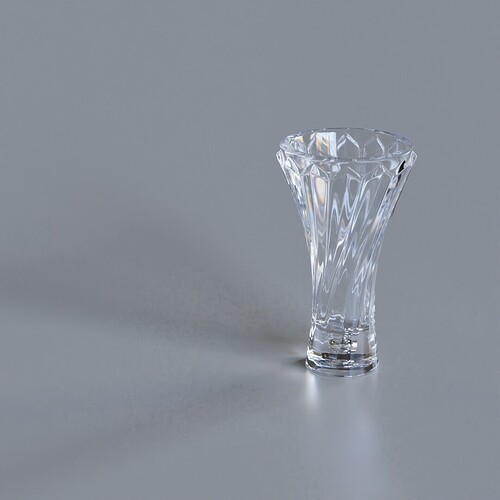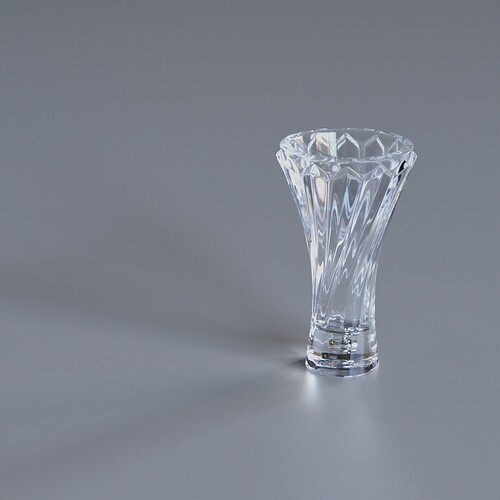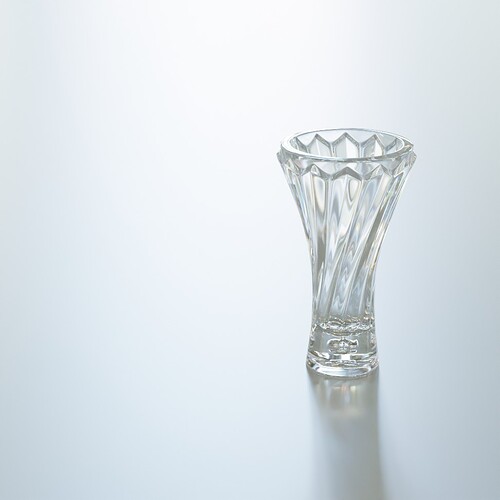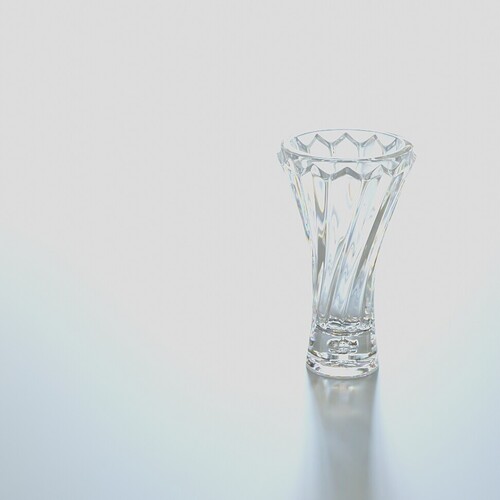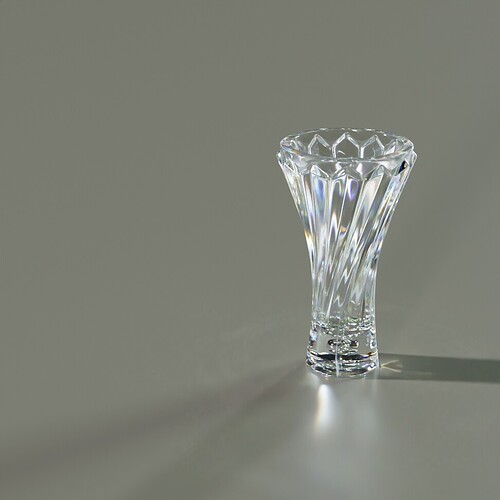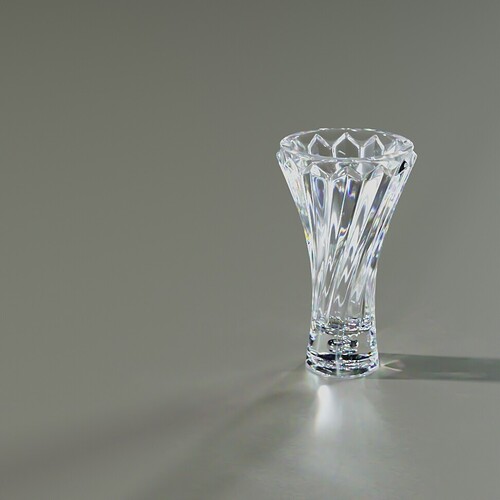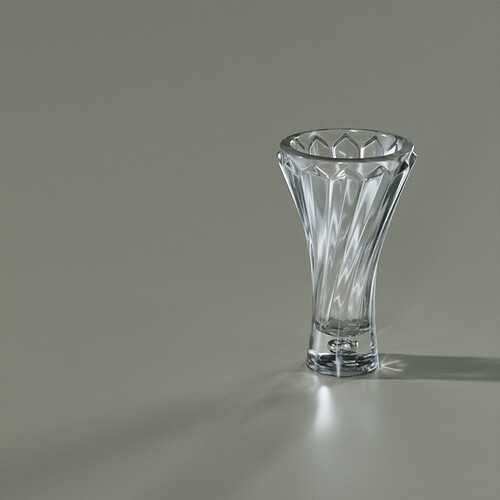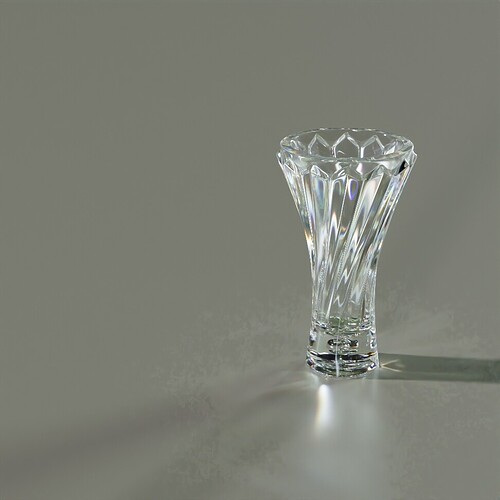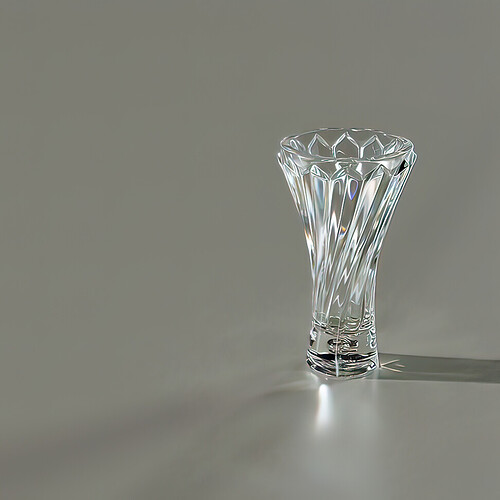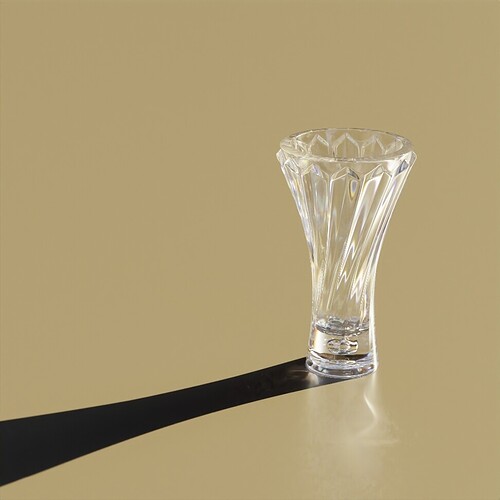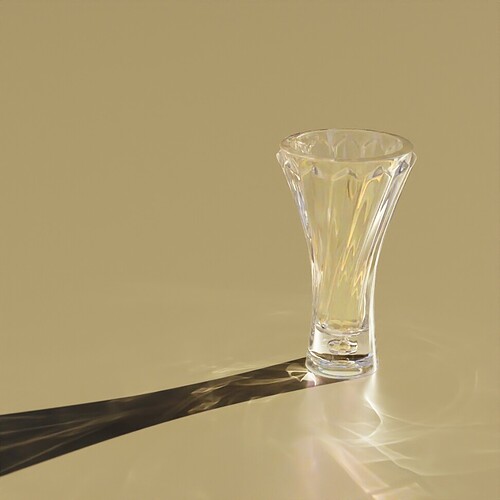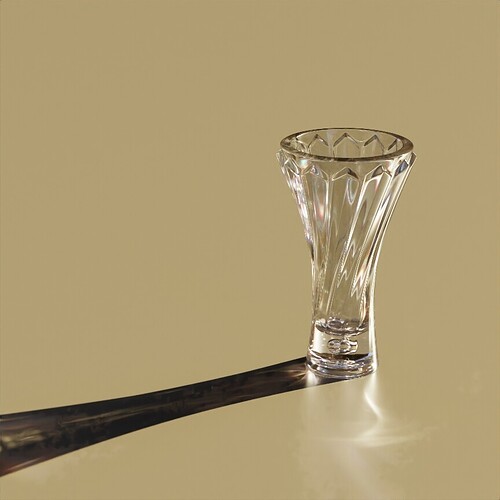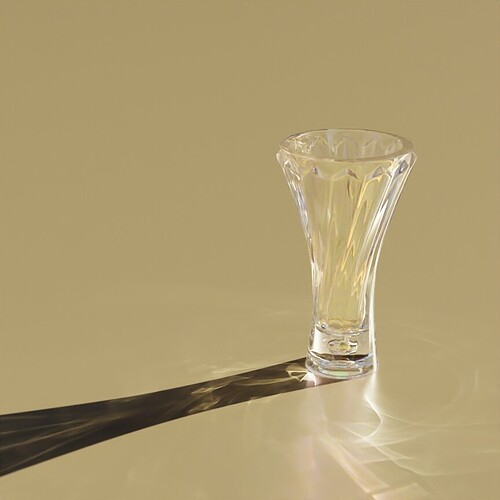Im trying to match as close as possible deep settings wise Cycles to Octane for this one scene rendering a glass with an HDRI background.
Octane is using GGX for the glass material with roughness set to 0.05, Dispersion set to 0.010 IOR set to 1.550
The color management is set to Filmic and Gamma at 1.0 (all that happens if you set it to say raw with non LUT is it under exposes it and you can bring up the exposure in photoshop and find it matching blenders filmic).
Octanes camera imager settings are set to defaults and i took off the vignetting.
The render was set to Adaptive sampling with default 0.03 threshold. The GI was set to unlimited. The other quality settings were default such as glossy depth 24, scatter depth 8. The filter size was 1.20
Kernel = path tracer
HDRI was set to 32bit. The plane material was a default universal material.
I could have used the Octane beauty pass AI denoiser but its slightly noiser than Blender 2.93 ODIN so i used Blender ODIN simply by feeding the Octane denoiser beauty pass into the blender denoise node.
For the Cycles render I was able to emulate the Octane scene very closely.
I set the adaptive sampling threshold to the same 0.03. I set the pixel filter to 1.20 and Gaussian.
I set the max samples to 500K because i thought it would reach the threshold and finish…
I set the light bounces to the same as octane limiting the glossy to 24.
For the Plane material i copied the hex albedo color and used the same roughness settings etc.
Same HDRI same rotation. Same color management.
I turned off cycles light clamping completely. i turned off the filter glossy.
For the Glass material i used a complex dispersion glass from blenderkit. Also using GGX, with the same IOR and the same roughness. I set the dispersion to 3.0 for a very similar result, and yes its proper dispersion.
In the end Octane ran its 10k samples in 16mins… Cycles did not reach noise threshold because i had turned off the filter glossy and light clamping so it kept throwing new hot pixels… however it reaches 210K samples in 30 mins…
Here are the results in JPG format.
As you can see OIDN could not remove all the noise in Cycles but i imagine i could set the filter glossy very low like .1 and probably get a similar result…
Inspect for yourself, NO DIFFERENCE in caustics or dispersion quality. Apart from some of the nice lighting setup and camera setup options in octane and its very nice dispersion capabilities for things like Metals and i guess more flexible dispersion for glass, im not seeing the great advantage over cycles, Yet (only been testing for a day).
Cycles is about 4X faster when in a fair test. And there is the amazing photographer addon which gives it even more flexiblity than the Octane Camera settings.
note the rotation of the HDRI isnt a perfect match between the two scenes because of the way octane handles the rotation i had to eye ball it for cycles.
Test 2.
Different HDRI.
Octane dispersion set to 0.02 and glass ior to 1.65
Cycles dispersion set to 6 and ior 1.65
Cycles pixel filter set to .1
Let them run for the same amount of time. Cycles only managed about 20K samples. maybe struggling because of the dispersion.
I dont know why Octanes HDRI is more exposed i am using the gamma set to 1.0 in the HDRI and gamma set to 1 in the color management same as test 1.
